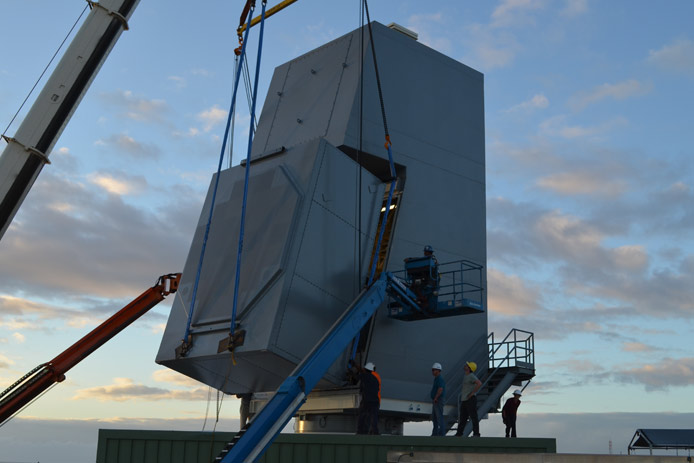
ARLINGTON, Va. – The Navy is considering adding the AN/SPY-6 radar to legacy Flight IIA Arleigh Burke-class guided-missile destroyers along with the new Baseline 10 Aegis Combat System developed for the next-generation Flight III destroyers, service officials said on Wednesday.
The Navy is set to include funds starting in Fiscal Year 2021 to add the Raytheon radars and the Lockheed Martin combat system upgrade as part of the Flight IIAs mid-life modernization period, Capt. Jason Hall with Program Executive Office Integrated Warfare Systems told reporters during the 2020 Surface Navy Association symposium.
“Nothing committed to contracts or to a ship yet. So, we’re working through what happens over the next couple of years,” Hall said.
Last year, PEO IWS commissioned Raytheon to undertake a technical study to see if a variant of the SPY-6 radar could be installed aboard the older destroyers during their mid-life maintenance and modernization upgrades, Raytheon SPY-6 program director Mike Mills told USNI News on Wednesday.
“They asked us to bring a concept forward on what the configuration would look like, and the big thing for us was as much reuse as possible to be able to drive a low-cost solution,” Mills said.

SPY-6 is based on a modular design of two-foot-squared cubes stacked together to create radars of scalable sizes. The SPY-6 being installed on the new Flight III DDGs is made up of 37 of the RMA blocks, whereas the variant going on the older Flight IIA ships to replace the Lockheed Martin AN/SPY-1D(v) is smaller and made of 24 RMA blocks, Mills said.
The pitch from Raytheon and the Navy come as the Navy is in the midst of modernizing its destroyer fleet.
The Navy has continued to work through Burkes upgrades to Baseline 9 – a capability that replaces the older computing components with modern servers and a new signal processor to make better use of the signals from the legacy analog AN/SPY-1D radars. The upgrade allows the destroyers to engage ballistic missile targets and traditional air warfare threats simultaneously. It also allows the ships to fit into the Navy’s Naval Integrated Fire Control Counter Air (NIFC-CA) construct that allows the ship to take targeting information from sensors off the ship.
The Baseline 10 upgrade enhances those capabilities and is designed to work with SPY-6 and the legacy SPY-1 radars.
The S-band SPY-6, or the Air and Missile Defense Radar, was born following the cancelation of the next-generation cruiser (CG(X)) program and the restart of the Arleigh Burke line in 2008.
The radar is designed to provide a 30-times boost in sensitivity over the current SPY-1D radars found on current Burkes, the Navy has said.
The first Flight III destroyer, the future Jack H. Lucas (DDG-125), is being built with Baseline 10 and SPY-6 radar. Lucas is currently under construction at the Ingalls Shipyard in Pascagoula, Miss., and is expected to deliver to the Navy in 2021.





